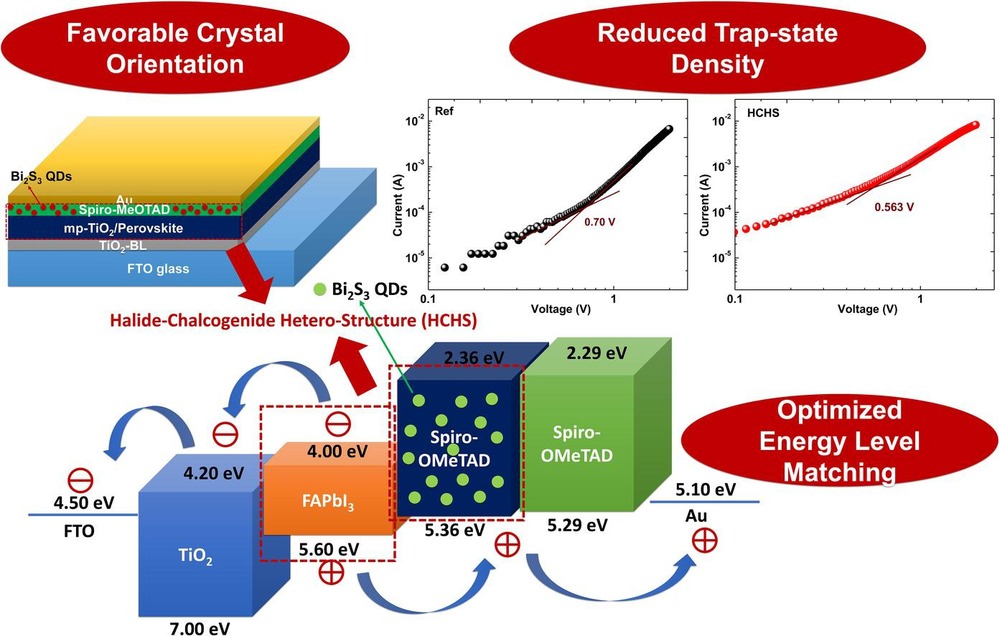Riming Nie, Zeliang Wei, Aarti Mehta, Lingfeng Chao, Jiaxing Gao, Weicun Chu, Zhongping Li , Han Miao, Yonghua Chen, Wanlin Guo.
Chemical Engineering Journal, 462, 142214(2023)
Abstract:
Organic-inorganic halide perovskite solar cells (PSCs) have experienced rapid growth in power conversion efficiencies (PCEs), however, their commercialization is limited by their inherent poor long-term stability. Mixed halide and chalcogenide is a good pathway to fabricate highly efficient and stable solar cells. Here, we constructed halide-chalcogenide hetero-structure in PSCs by incorporating Bi2S3 quantum dots (QDs) into 2,2′,7,7′-tetrakis-(N,N-di-4-methoxyphenylamino)-9,9′-spirobifluorene (spiro-OMeTAD). The construction of halide-chalcogenide hetero-structure optimizes the energy level matching between spiro-OMeTAD and perovskite, inhibits the decomposition of α-phase FAPbI3 and the formation of δ-phase FAPbI3, increases the hole mobility of spiro-OMeTAD, reduces the defect density, and passivates the defect states. The solar cells with halide-chalcogenide hetero-structure prepared by 0.5 mg/mL Bi2S3 QDs exhibited the highest PCE of 23.31% at standard air mass 1.5 global with enhanced humidity stability. This work provides a perspective on the introduction of halide-chalcogenide hetero-structure to enhance the stability of PSCs.

--校内链接--
--校外链接--

微信公众号